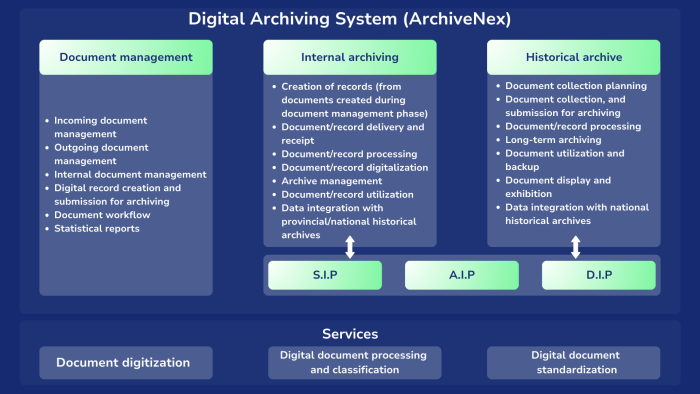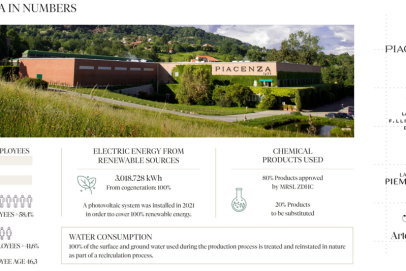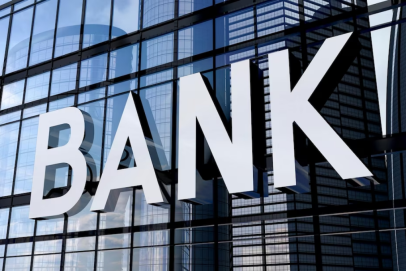Digital Archiving – From demand to ArchiveNex solution
Digital archiving solutions not only facilitate critical data management and protection but also offer numerous benefits, including improved efficiency, cost savings, legal compliance, and preparedness for future development in the digital age.
1. Needs for digital archiving
In recent years, Vietnam has experienced significant advancements in information and communications technology. The explosion of digital data has posed considerable challenges for state agencies and businesses in terms of information archiving and management. Traditional paper archiving methods are no longer adequate due to limitations in space, cost, and efficiency.
In Vietnam, the implementation of digital archiving solutions has garnered increasing attention. The revised Law on Archives, which focuses on digital archiving, is currently under review by the National Assembly. Digital archiving has become an indispensable solution for agencies and organizations. Many state agencies and businesses have been researching and adopting modern archiving systems that leverage technologies such as cloud computing, artificial intelligence, and big data to enhance management and information security.
2. Key challenges of digital archiving:
While digital archiving offers many benefits, such as cost savings, increased security, and improved work efficiency, it also presents significant challenges. Identifying and addressing these challenges is essential for optimizing the use of digital archiving systems.
– Data security and safety: Digital systems are vulnerable to data loss due to archiving device failures or malicious attacks. Criminals can copy and even alter document content, posing severe security threats.
– Long-term data preservation: Ensuring data integrity and accessibility over long periods is a major challenge. Data must be archived under optimal conditions to prevent damage or obsolescence. Organizations need to focus on long-term data management strategies, which include maintaining archiving devices, updating data formats, and ensuring data readability across different technological generations (including archiving infrastructure and file format changes).
– Availability and accessibility: Digital archiving systems must provide quick and easy data access. However, maintaining rapid access becomes more complicated with the increasing volume of data. High-performance archiving solutions, therefore, are essential.
– Compliance with regulations and laws: Legal compliance related to data archiving and protection is another concern as it varies by industry, requiring organizations to continuously update and adjust to latest policies.
– Investment costs: While digital archiving saves money in the long run, the initial costs for hardware, software, and personnel training can be substantial. Investing in infrastructure, software, and personnel training also demand significant resources. Therefore, choosing the right system is crucial to keep long-term investment costs low.
3. ArchiveNex – Digital archiving system based on Open Archival Information System (OAIS) architecture according to ISO 14721:2012
To address these challenges, numerous archival agencies and organizations worldwide have built digital archiving systems based on the Open Archival Information System (OAIS) model as per ISO 14721:2012. This standard and flexible reference framework for digital archiving and management was developed by the US National Aeronautics and Space Administration (NASA) and later standardized by the International Organization for Standardization (ISO).
Understanding modern archiving technology and the operations of Vietnam’s archival industry, the ArchiveNex system is designed and built in compliance with the OAIS model. Its flexible architecture allows the integration of various archiving technologies and solutions, ensuring safety, long-term preservation, and accessible information anytime, anywhere.
– Enhanced security and access control: The OAIS-based system enhances security and access control mechanisms, ensuring that only authorized users can access and manipulate data, protecting it from threats and breaches.
– Long-term preservation: The system manages records using information packages (Submission Information Package – SIP, Archival Information Package – AIP, and Dissemination Information Package – DIP) capable of independently saving and self-recovering information, maintaining data integrity and accessibility over time, regardless of technological changes.
– Effective management: ArchiveNex provides clear procedures for receiving, storing, managing, and accessing data, increasing information management efficiency. Its specific functional components facilitate easy deployment and management.
– Effective and highly compatible data mining: The system enables quick and easy search and access to records while ensuring compatibility between different systems. This is crucial in large or cross-functional organizations where data needs to be shared and accessed across multiple systems.
Digital archiving solutions not only address data management and protection needs but also offer benefits in terms of cost savings, work efficiency, and legal compliance. More importantly, choosing and investing in a digital archiving system with the right architecture and technology is key to effective and sustainable operations, meeting current needs, and preparing for future development in the digital age.
| Exclusive article written by FPT IS Technology Expert
Author Nguyen Trung Hieu – Product Owner of ArchiveNex – Digital Archiving System, FPT IS |













